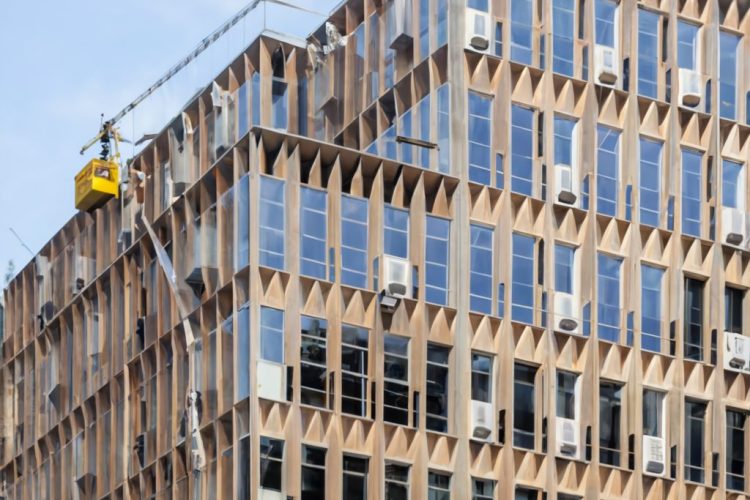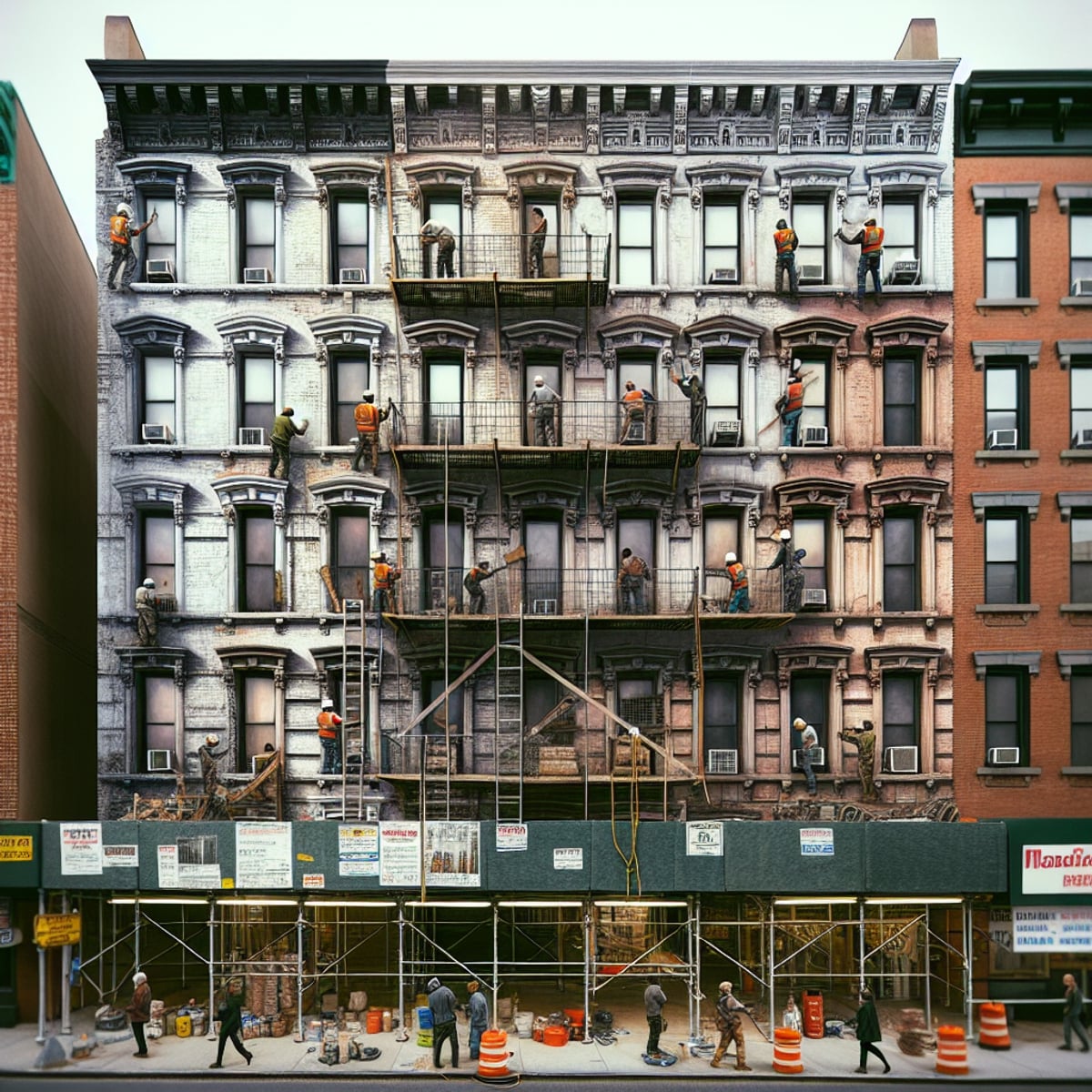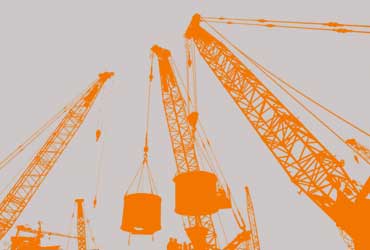
Why is facade maintenance important?
Preserving the façade is instrumental in maintaining building safety, appearance, and the integrity of the structure. It involves activities such as cleaning, damage control, and repairs. This article will discuss the importance of façade maintenance and why building managers or owners should maintain it.
Key Takeaways
Here are the key takeaways from this article:
- Regular facade maintenance is crucial for preserving the aesthetic value, structural integrity, and safety of buildings.
- Regular Cleaning: Facade maintenance involves proactive cleaning to prevent costly repairs and loss of curb appeal.
- Timely Restoration: Restoration and cleaning play a pivotal role in ensuring safety and aesthetics by removing dirt, grime, and pollutants for a refreshed facade.
- Compliance with Regulations: It’s essential to comply with regulations such as the FAA guidelines for facade maintenance to uphold building standards and safety.
- Positive Tenant and Customer Experience: Well-maintained facade exteriors contribute to creating a positive experience for tenants and customers, ultimately adding value to the property.
Why Facade Maintenance Matters
The presentation of a building does not simply involve how attractive it looks. It is because it’s critical to ensure that the building remains stable and secure for people within. These regular activities include cleaning, inspections, and repairs that help prevent issues such as stains corrosion pollution damage parasites leaks rust, etc. Prolonged neglect of façade maintenance can lead to severe structural damage, and the restoration process could become economically problematic with legal consequences.
Facade maintenance has nothing to do with appearance but is an integral aspect of the preservation of a building. By spending money on regular cleaning and maintenance, owners can enhance the aesthetics of their property while also ensuring its stability and safety. Now, let us consider some facts about why preservation is so crucial to building facades.
“Facadism involves dismantling a building’s outer face to preserve it while constructing one behind or within, and is viewed often as the middle ground between those in need of preservation an significant architectural heritage and economics/real estate development.” – James. S Russel
The Importance of Sustaining Building Aesthetics
1. Aesthetic improvement in appearance and image through construction
Cleaning the facade of a building is also very important for creating an overall image. Properly maintained curb appeal displays prestige, employer care, and ownership satisfaction. It sets a positive initial tone for visitors, tenants, and customers alike, which adds to the image of this property as favorable.
2. On The Stains, Corrosion, and Other Related Problems
Disrepair in buildings occurs due to stains, corrosion, pollution by pests’ nests or leaks, and rust, which leads to not only poor aesthetics but also contributes to disarchitecture. Failure to deal with such concerns may result in gradual damage to the facade, thereby creating structural problems and safety risks. Regular maintenance and timely interventions must be carried out to ensure that such problems do not get worse.
Case Study: Neglected Facade Maintenance: Its Effect on Property Value
The study by the experts serves as a compelling example of the negative effects that can be caused by neglected facade maintenance on property value. Buildings with poorly maintained facades also deteriorate in value with time. On the other hand, entities with good exteriors have a higher resale or rental value because they represent better curb appeal and quality.
Recognizing the connection between facade hygiene and improved building image, describing how pertinent issues contribute to the deterioration of the system under consideration, supplemented by an exploratory case study that shows the direct effect on property value results in understanding what key role such maintenance plays in preserving viability as well as desirability features.
Preventing Costly Repairs Through Proactive Cleaning
Routine facade maintenance that is both regular and proactive not only prevents costly repairs but also avoids losing curb appeal. If building owners invest in maintaining and inspecting their buildings, much money can be saved on larger issues after years.
Here are two important talking points to consider: The national ombudsman is tasked with the legal responsibility of handling such issues:
The Long-term Financial Benefits of Regular Facade Cleaning and Inspections
- Preserving the Building’s Structural Integrity: As time goes by, a facade can get dirty with grime and other pollutants, corroding it or causing degradation of building materials as well as injuring the structure. Through regular cleaning, these contaminants are removed and prevented from causing further destruction, making the facade durable.
- Identifying Early Signs of Damage: Proactive facade cleaning enables the conducting of detailed inspections that can help spot early manifestations or antecedents of degradation if there are any. Through early stages of identification of such issues, property owners can avoid further damages and unnecessary expensive repairs.
Real-Life Example: How Proactive Maintenance Saved a Building Owner from Costly Restoration Work
For instance, a building owner chose to invest in routine facade cleanings and inspections as an element of their upkeep program. On one of these routine inspections, specialists found fissures on the facade that were not noticeable with a bare sight. Thanks to their timely action, there was no water infiltration or any other damage from the degrading structure.
This could have been a major problem that would later result in extensive restoration work due to water damage inside the building. Due to preventive maintenance, the building owner saved money and time by avoiding costly repairs.
Professional cleanings and inspections of the facade of your building can be scheduled regularly to prevent any other major issues before they even occur. This upfront effort not only saves you money but also helps maintain the entire property’s look and valuation.
Ensuring Safety and Aesthetics with Timely Restoration and Cleaning
When it comes to facade maintenance, timely restoration and cleaning play a crucial role in ensuring both the safety and aesthetics of the building. Let’s explore why these aspects are important:
Prioritizing Facade Health: The Role of Restoration in Avoiding Safety Hazards
Facade restoration involves addressing structural defects, such as cracks or weakened materials, which can pose significant safety hazards if left untreated. By identifying and rectifying these issues promptly, building owners can prevent potential accidents and injuries to occupants or passersby. For example, restoring a deteriorating facade can prevent falling debris that may cause harm or damage to nearby property.
- Facade restoration prevents safety hazards caused by structural defects.
- Prompt identification and rectification of issues ensure the well-being of occupants.
- Falls due to unstable facades can lead to accidents or damage to nearby property.
The Visual Transformation: Removing Dirt, Grime, and Pollutants for a Refreshed Facade
Over time, facades accumulate dirt, grime, pollutants, and other unsightly substances that not only affect the building’s appearance but also contribute to its deterioration. Regular cleaning helps remove these elements, resulting in a refreshed facade that enhances the overall aesthetic appeal of the building. This is particularly important for commercial properties aiming to attract customers or tenants who value cleanliness and professionalism.
Additionally, by removing pollutants such as mold or algae growth, facade cleaning helps maintain a healthier indoor environment by preventing the spread of allergens and improving air quality. This can contribute to the well-being and comfort of occupants.
- Regular cleaning removes dirt, grime, and pollutants.
- A refreshed facade enhances the building’s aesthetic appeal.
- Clean facades attract customers and tenants who value professionalism.
By understanding the importance of timely restoration and cleaning, building owners can ensure the safety of their occupants while maintaining an attractive appearance for their property.
Other Benefits of Regular Facade Upkeep
Preserving the benefits, attracting tenants, and lowering repair costs are additional advantages of regular facade upkeep. Let’s explore these benefits in more detail:
1. Creating a Positive Tenant and Customer Experience Through Well-Maintained Exteriors:
A well-maintained facade also creates a positive impression on tenants and customers. Then, if the outside of a building is clean, attractive, and maintained, this positively contributes to how we view its general image. A building will be more attractive to tenants and clients since they want to visit a building that looks well-kept from the outside. This will also affect the interest rates and the level of occupancy in such buildings.
2. Attracting Profitable Tenants:
The appearance of the building has significance in luring high-quality tenants. One thing that most companies value is their brand, or, to be more precise, their reputation, and in looking for buildings, it rewards plenty of professional approaches. With a regular facade maintenance program, building owners can therefore present their property as an appealing place to do business for businesses looking forward to working in excellent surroundings. This often translates into higher rents and long-term tenants with good credit.
3. Lowering Repair Costs:
A project like routine facade maintenance helps to prevent small issues from becoming large concerns that are expensive to repair. Routine inspection, cleaning, and maintenance are measures that have been used in recent times to identify cracks, leaks, and structural defects as quickly as possible before they become noxious. Apart from saving money, timely repairs also maintain the structural integrity of a building and make it safe for years.
To illustrate the importance of regular facade upkeep, consider the following scenario: For too long, a commercial building overlooks the facade. As a result, the liquid that penetrates the wall leads to destruction with all other construction from within. To solve this issue, the cost of fixing may turn out to be steep and call for a significant effort in restoring. Contrastively, if regular inspections and maintenance had been carried out, this issue would have probably been identified at the time, and it could cost less money to take care of.
Facade maintenance is an inexpensive way of providing benefits to the owners, like an improved tenant and customer experience, attracting profitable tenants, and reducing repair costs. Ongoing preservation does not only preserve the beauty but also enhances its total value and life.
Frequently Asked Questions (FAQs)
Why is facade maintenance important?
-Facade maintenance is crucial for preserving the aesthetic value, structural integrity, and safety of buildings. Neglected facades can lead to costly repairs and a loss of curb appeal.
What are the key benefits of regular facade cleaning?
-Regular cleaning helps prevent expensive repairs and maintains the building’s appearance by removing dirt, grime, and pollutants.
How does restoration play a role in maintaining safety and aesthetics?
-Restoration removes stains, corrosion, and other issues that can compromise the facade’s safety and appearance. It ensures a refreshed facade by eliminating dirt and pollutants.
Are there any financial benefits to regular facade upkeep?
-Yes, investing in regular upkeep lowers repair costs in the long run. It also contributes to attracting profitable tenants and preserving the overall value of the building.
What other benefits does regular facade maintenance offer?
-Regular maintenance creates a positive tenant and customer experience through well-maintained exteriors. It also helps attract profitable tenants and lowers repair costs.
Can neglect facade maintenance impact property value?
-Yes, neglected maintenance can significantly reduce property value. Stains, corrosion, and other issues affect the building’s appearance and can lead to costly restoration work.
How can proactive cleaning prevent costly repairs?
-Proactive cleaning helps identify issues early on, preventing them from worsening and requiring extensive restoration work. It saves building owners substantial repair costs.
What role does restoration play in avoiding safety hazards?
-Restoration addresses issues that may pose safety hazards. By prioritizing facade health through restoration, building owners ensure the safety of both occupants and passersby.
Is compliance with regulations important for facade maintenance?
-Yes, compliance with regulations is essential. Neglected facades may not meet safety standards, and failure to maintain them can result in legal and financial consequences.
How does facade maintenance contribute to a building’s long-term sustainability?
-Regular upkeep preserves the aesthetic appeal of the building and maintains its overall value. It also helps extend the lifespan of the facade, contributing to the building’s long-term sustainability.
Conclusion
In conclusion, the importance of facade maintenance cannot be denied. Not only does it enhance the architectural value of buildings, but it also ensures their structural integrity while satisfying all relevant standards. Regular cleaning, repairs, and restoration of buildings contribute significantly to the maintenance of a good appearance that is safe for habitation.







